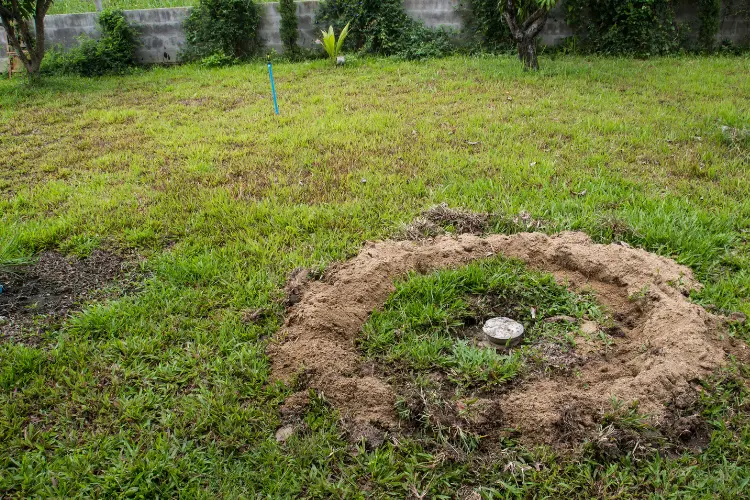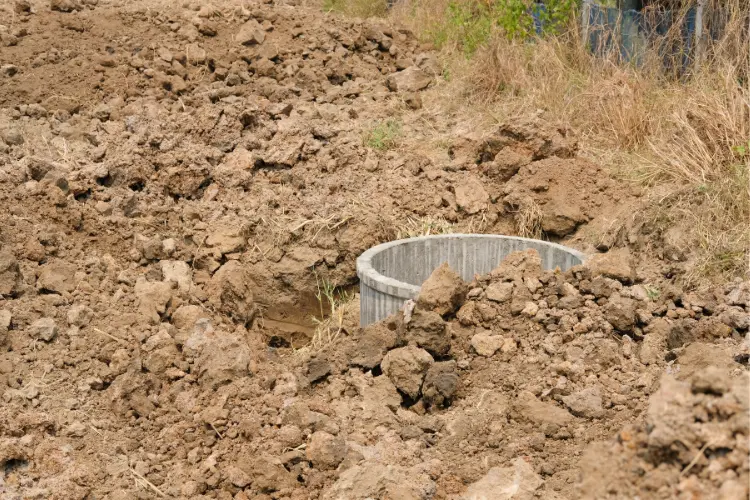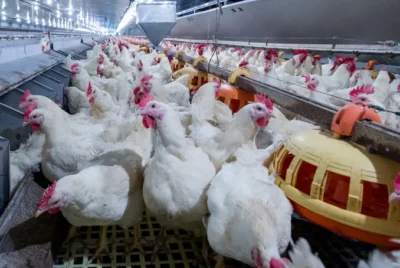Stay Legal: Understanding Septic Tank Regulations for Poultry Farms

For poultry farm owners, understanding and complying with septic tank regulations is both crucial and challenging. Keeping up with the strict rules set by both federal and local authorities can feel overwhelming, especially when you’re trying to run a busy farm.
The risks of not staying compliant are serious, including the possibility of fines, legal issues, and the potential harm to the environment. This makes it incredibly important for farm owners to have a clear and simple guide to help them navigate these regulations successfully.
So we designed this guide to offer guidance, providing straightforward advice and essential information to ensure poultry farms can operate legally and efficiently.
Federal Regulations Governing Septic Tanks on Poultry Farms
In Canada, the management and regulation of septic systems on poultry farms fall under the jurisdiction of both federal and provincial/territorial authorities. However, the federal government sets broad environmental standards and guidelines that provinces and territories are expected to meet or exceed.
The Canadian Environmental Protection Act (CEPA)
The CEPA is a key piece of legislation that governs environmental practices across Canada, including waste management on farms. Under the CEPA, poultry farm owners are required to ensure that their septic systems do not release harmful substances into the environment in quantities or concentrations that may harm human health or biodiversity.
Fisheries Act
The Fisheries Act is another critical piece of federal legislation relevant to septic tank management on farms. It prohibits the release of deleterious substances into waters frequented by fish. This act underscores the importance of maintaining a septic system in good working order to prevent effluent from contaminating local waterways.
Provincial and Territorial Regulations
While the federal government provides the overarching framework, it’s the responsibility of each province and territory to enforce specific regulations related to septic systems on poultry farms. These local regulations often detail the design, installation, operation, and maintenance requirements for septic systems. They may include:
- Permit requirements: Before installing a new septic system or modifying an existing one, poultry farm owners may need to obtain a permit from their local municipality or provincial/territorial environmental department.
- Design and installation standards: These standards ensure that septic systems are designed and installed in a manner that meets environmental and public health objectives.
- Maintenance and inspection: Regular maintenance and inspection are crucial for the continued effectiveness of septic systems. Provincial/territorial regulations may specify the frequency and type of maintenance and inspection required.
Variances in Regulations Based on State

Septic tank regulations for poultry farms can vary significantly from one state to another. This variation is largely due to differences in environmental policies, the scale of poultry farming, and the sensitivity of local ecosystems.
For instance, states with large coastal ecosystems might have stricter regulations to prevent nitrogen and phosphorus pollution, which can cause algal blooms and fish kills.
Key Areas of Variation of Septic Tanks on Poultry Farms
- Installation Standards: Some states may require more robust septic systems to handle the volume and characteristics of poultry farm waste, which is often richer in nutrients and pathogens than domestic sewage.
- Inspection and Maintenance: Frequency and rigor of inspections can vary, with some states mandating regular checks by certified professionals to ensure systems operate effectively and do not leak.
- Nutrient Management Plans: States with vulnerable waterways often require farms to develop and follow nutrient management plans that detail how manure and wastewater will be stored, treated, and applied to land to minimize environmental impact.
- Setback Distances: The required distance between septic systems, wells, and water bodies can differ, affecting where on the farm these systems can be installed.
Permitting Process for Septic Systems on Poultry Farms

The permitting process for septic systems on poultry farms typically involves several key steps, though specific requirements can vary by state:
- Site Evaluation: Before installation, a thorough assessment of the proposed site is necessary to determine soil characteristics, groundwater levels, and proximity to sensitive areas. This evaluation helps in designing a system that fits the local environmental conditions.
- Design Approval: After site evaluation, a system design must be submitted for approval. This design should meet or exceed state regulations and is often required to be prepared by a licensed engineer or certified septic system designer.
- Permit Application: With design approval, farmers can then apply for a permit. This application usually includes detailed plans, the site evaluation report, design documents, and a fee.
- Construction and Inspection: Upon receiving the permit, construction can begin. After construction, an inspection by a state or local official is typically required to ensure the system was installed as per the approved design and complies with all regulations.
- Operation and Maintenance: After approval, ongoing maintenance is crucial for compliance. This may include regular inspections, pumping, and repairs as needed. Documentation of maintenance activities is often required to renew permits or for regulatory checks.
Septic Tank Design and Installation on Poultry Farms Considerations

Waste Volume and Composition
The unique waste profile of poultry farms, characterized by high organic content from manure, bedding, and wash water, requires specialized septic system design considerations.
This organic-rich waste results in a higher biochemical oxygen demand (BOD), necessitating a system capable of efficiently processing and treating this type of effluent.
The design must therefore account for the separation of solid and liquid waste, enabling the effective management of the system’s capacity and ensuring that the treatment processes can handle the waste volume without compromising performance.
This separation also aids in the potential reuse or disposal of solid wastes in an environmentally friendly manner.
System Size and Capacity
The size and capacity of the septic system are critical factors in its design and installation on a poultry farm. Given the substantial volume of waste generated, the system, including the septic tank and the leach field, must be significantly larger than those used for residential purposes.
Accurate estimation of the waste volume, based on the number of poultry and the operational processes, is essential for determining the appropriate size of the septic system.
Additionally, consideration of future expansion possibilities is important to ensure the system remains adequate over time, avoiding the need for expensive modifications or upgrades as the farm grows.
Site Evaluation and System Type
Evaluating the site for a septic system on a poultry farm involves assessing soil types, percolation rates, and the overall layout of the farm to identify the most suitable type of septic system. The soil assessment helps determine the system’s design by indicating how well the soil can filter and absorb the effluent, which is critical for preventing groundwater contamination.
Farms with poorly draining soils might require alternative designs, such as mound systems or constructed wetlands, to ensure efficient waste treatment. The farm’s proximity to water bodies also influences the system’s choice to mitigate the risk of contaminating local water sources.
Health and Environmental Regulations
Compliance with health and environmental regulations is paramount in the design and installation of septic systems on poultry farms.
These regulations, which vary by jurisdiction, set forth the standards for waste treatment and disposal to minimize the impact on the environment and public health. They may dictate specific requirements for the system’s design, capacity, and maintenance practices to ensure effective waste management.
Adhering to these regulations not only helps protect local ecosystems and water quality but also ensures the farm operates within legal requirements, avoiding potential fines or legal issues.
Installation and Maintenance
The complexity of septic systems for poultry farms necessitates professional expertise for both installation and ongoing maintenance.
Engaging with contractors experienced in agricultural waste management systems ensures that the installation meets both the farm’s needs and regulatory standards.
Regular maintenance is crucial for the system’s longevity and efficiency, including routine inspections, pumping, and repairs as needed.
These practices prevent system failures, overloads, and environmental contamination, ensuring that the farm remains operational and compliant with environmental standards.
Technology and Innovation
Incorporating technology and innovation into the septic system design can enhance its efficiency and sustainability.
Advanced treatment options, such as aerobic treatment units, are capable of handling the high-strength waste typical of poultry farms more effectively than traditional septic systems. These technologies offer improved effluent quality, reducing the environmental impact of waste discharge.
Additionally, considering sustainable practices, like energy-efficient systems and the recycling of waste products into valuable resources (e.g., biogas production or as fertilizer), can further enhance the environmental sustainability of poultry farm operations.
Septic Tank Regulations for Poultry Farms Conclusion
Understanding and following septic tank regulations is essential for poultry farm owners to keep their operations running smoothly and legally. By staying compliant, farmers not only avoid potential penalties but also play a part in protecting the environment and public health. This guide emphasizes the value of being informed and prepared, ensuring that poultry farms operate responsibly and successfully into the future.
If you're currently facing challenges with your septic system or just want to double-check that you're on the right track, why not take our quick quiz?
It's designed to help you identify any specific issues and offer tailored solutions to ensure your poultry farm remains efficient and compliant well into the future.
Let's work together towards a sustainable and prosperous farming practice.



